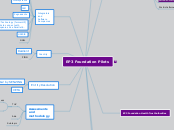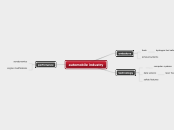EP3 Foundation Pilots
Assessments and methodology
Ada
TUV
Program GDPR certification for GDPR and practice to assess for GDPR
Customers - access
Entity Resolution
VETA
G2 by SENZING
G2 does entity resolution they have a GDPR tool
Identity
PING
Resilient
Integrators and Software Companies
GG4L
UNYSIS
DXC Technology (former HP) wants to connect with companies like Parallel 6.
Cognasante
IBM
Intersystems
CSRA
Data Sources
SYNCHROGENX
CDC Reporting Data
Sentene
Applications
VisionTree
VTOC (Patient reported outcomes)
Baby Center
Parallel 6
clinical Trials and Recruitment
SAFE Firearms
SAFE Group
SAFE (HIV status)
EP3 Foundation Health Trust Authorities
CHIME
AEHIS, AEHIT and AEHIA were formed under the auspices of CHIME in 2014. CHIME leadership heeded a message of concern from members that there was a distinct lack of education and resources geared towards healthcare security, technology and application executives; these groups were designed to address these unmet needs in the industry.
formed under the auspices of CHIME in 2014. CHIME leadership heeded a message of concern from members that there was a distinct lack of education and resources geared towards healthcare security, technology and application executives; these groups were designed to address these unmet needs in the industry.
AEHIA were
formed under the auspices of CHIME in 2014. CHIME leadership heeded a message of concern from members that there was a distinct lack of education and resources geared towards healthcare security, technology and application executives; these groups were designed to address these unmet needs in the industry.
The Association for Executives in Healthcare Information Applications (AEHIA) was launched to provide an education and networking platform to healthcare’s senior IT applications leaders.
AEHIT
The Association for Executives in Healthcare Information Technology (AEHIT) was launched to provide an education and networking platform to healthcare’s senior IT technology leaders.
formed under the auspices of CHIME in 2014. CHIME leadership heeded a message of concern from members that there was a distinct lack of education and resources geared towards healthcare security, technology and application executives; these groups were designed to address these unmet needs in the industry.
AEHIS,
formed under the auspices of CHIME in 2014. CHIME leadership heeded a message of concern from members that there was a distinct lack of education and resources geared towards healthcare security, technology and application executives; these groups were designed to address these unmet needs in the industry.
The Association for Executives in Healthcare Information Security (AEHIS) was launched to provide an education and networking platform to healthcare’s senior IT security leaders.
CHIME Foundation Certified Healthcare Executive (CFCHE)
CHCIO International
CHCIO Certification & CEUs
ACC American college of Cardiology
Subtopic
Board Certification
AMA
States
Texas
Texas: Comprehensive Rehabilitation Services (CRS) Standards for Providers
Comprehensive Rehabilitation Services (CRS) Standards for ProvidersComprehensive Rehabilitation Services (CRS) Standards for ProvidersComprehensive Rehabilitation Services (CRS) Standards for Providers
Home
> Laws & Regulations
> Handbooks
> Comprehensive Rehabilitation Services (CRS) Standards for Providers
Standards for Commercial Support: Standards to Ensure Independence in CME Activities
Standards for Commercial Support: Standards to Ensure Independence in CME Activities
STANDARD 1.1 A CME provider must ensure that the following decisions were made free of the control of a commercial interest. (See www.accme.org for a definition of a "commercial interest" and some exemptions.) (a) Identification of CME needs; (b) Determination of educational objectives; (c) Selection and presentation of content; (d) Selection of all persons and organizations that will be in a position to control the content of the CME; (e) Selection of educational methods; (f) Evaluation of the activity.
STANDARD 1.2 A commercial interest cannot take the role of non-accredited partner in a joint provider relationship.
STANDARD 2.1 The provider must be able to show that everyone who is in a position to control the content of an education activity has disclosed all relevant financial relationships with any commercial interest to the provider. The ACCME defines "'relevant' financial relationships” as financial relationships in any amount occurring within the past 12 months that create a conflict of interest.
STANDARD 2.2 An individual who refuses to disclose relevant financial relationships will be disqualified from being a planning committee member, a teacher, or an author of CME, and cannot have control of, or responsibility for, the development, management, presentation or evaluation of the CME activity.
STANDARD 2.3 The provider must have implemented a mechanism to identify and resolve all conflicts of interest prior to the education activity being delivered to learners.
STANDARD 3.1 The provider must make all decisions regarding the disposition and disbursement of commercial support.
STANDARD 3.2 A provider cannot be required by a commercial interest to accept advice or services concerning teachers, authors, or participants or other education matters, including content, from a commercial interest as conditions of contributing funds or services.
STANDARD 3.3 All commercial support associated with a CME activity must be given with the full knowledge and approval of the provider.
STANDARD 3.4 The terms, conditions, and purposes of the commercial support must be documented in a written agreement between the commercial supporter that includes the provider and its educational partner(s). The agreement must include the provider, even if the support is given directly to the provider's educational partner or a joint provider.
STANDARD 3.5 The written agreement must specify the commercial interest that is the source of commercial support.
STANDARD 3.6 Both the commercial supporter and the provider must sign the written agreement between the commercial supporter and the provider.
STANDARD 3.7 The provider must have written policies and procedures governing honoraria and reimbursement of out-of-pocket expenses for planners, teachers and authors.
STANDARD 3.8 The provider, the joint provider, or designated educational partner must pay directly any teacher or author honoraria or reimbursement of out-of–pocket expenses in compliance with the provider's written policies and procedures.
STANDARD 3.9 No other payment shall be given to the director of the activity, planning committee members, teachers or authors, joint provider, or any others involved with the supported activity.
STANDARD 3.10 If teachers or authors are listed on the agenda as facilitating or conducting a presentation or session, but participate in the remainder of an educational event as a learner, their expenses can be reimbursed and honoraria can be paid for their teacher or author role only.
STANDARD 3.11 Social events or meals at CME activities cannot compete with or take precedence over the educational events.
STANDARD 3.12 The provider may not use commercial support to pay for travel, lodging, honoraria, or personal expenses for non-teacher or non-author participants of a CME activity. The provider may use commercial support to pay for travel, lodging, honoraria, or personal expenses for bona fide employees and volunteers of the provider, joint provider or educational partner.
STANDARD 3.13 The provider must be able to produce accurate documentation detailing the receipt and expenditure of the commercial support.
STANDARD 4.1 Arrangements for commercial exhibits or advertisements cannot influence planning or interfere with the presentation, nor can they be a condition of the provision of commercial support for CME activities.
STANDARD 4.2 Product-promotion material or product-specific advertisement of any type is prohibited in or during CME activities. The juxtaposition of editorial and advertising material on the same products or subjects must be avoided. Live (staffed exhibits, presentations) or enduring (printed or electronic advertisements) promotional activities must be kept separate from CME. For print, advertisements and promotional materials will not be interleafed within the pages of the CME content. Advertisements and promotional materials may face the first or last pages of printed CME content as long as these materials are not related to the CME content they face and are not paid for by the commercial supporters of the CME activity. For computer based, advertisements and promotional materials will not be visible on the screen at the same time as the CME content and not interleafed between computer ‘windows’ or screens of the CME content. Also, ACCME-accredited providers may not place their CME activities on a Web site owned or controlled by a commercial interest. With clear notification that the learner is leaving the educational Web site, links from the Web site of an ACCME accredited provider to pharmaceutical and device manufacturers’ product Web sites are permitted before or after the educational content of a CME activity, but shall not be embedded in the educational content of a CME activity. Advertising of any type is prohibited within the educational content of CME activities on the Internet including, but not limited to, banner ads, subliminal ads, and pop-up window ads. For computer based CME activities, advertisements and promotional materials may not be visible on the screen at the same time as the CME content and not interleafed between computer windows or screens of the CME content. For audio and video recording, advertisements and promotional materials will not be included within the CME. There will be no ‘commercial breaks.’ For live, face-to-face CME, advertisements and promotional materials cannot be displayed or distributed in the educational space immediately before, during, or after a CME activity. Providers cannot allow representatives of Commercial Interests to engage in sales or promotional activities while in the space or place of the CME activity. For Journal-based CME, None of the elements of journal-based CME can contain any advertising or product group messages of commercial interests. The learner must not encounter advertising within the pages of the article or within the pages of the related questions or evaluation materials.
STANDARD 4.3 Educational materials that are part of a CME activity, such as slides, abstracts and handouts, cannot contain any advertising, corporate logo, trade name or a product-group message of an ACCME-defined commercial interest.
STANDARD 4.4 Print or electronic information distributed about the non-CME elements of a CME activity that are not directly related to the transfer of education to the learner, such as schedules and content descriptions, may include product-promotion material or product-specific advertisement.
STANDARD 4.5 A provider cannot use a commercial interest as the agent providing a CME activity to learners, e.g., distribution of self-study CME activities or arranging for electronic access to CME activities.
STANDARD 5.1 The content or format of a CME activity or its related materials must promote improvements or quality in healthcare and not a specific proprietary business interest of a commercial interest.
STANDARD 5.2 Presentations must give a balanced view of therapeutic options. Use of generic names will contribute to this impartiality. If the CME educational material or content includes trade names, where available trade names from several companies should be used, not just trade names from a single company.
STANDARD 6.1 An individual must disclose to learners any relevant financial relationship(s), to include the following information: The name of the individual; The name of the commercial interest(s); The nature of the relationship the person has with each commercial interest.
STANDARD 6.2 For an individual with no relevant financial relationship(s) the learners must be informed that no relevant financial relationship(s) exist.
STANDARD 6.3 The source of all support from commercial interests must be disclosed to learners. When commercial support is "in-kind‟ the nature of the support must be disclosed to learners.
STANDARD 6.4 'Disclosure' must never include the use of a corporate logo, trade name or a product-group message of an ACCME-defined commercial interest.
STANDARD 6.5 A provider must disclose the above information to learners prior to the beginning of the educational activity.
Printer-friendly version
PDF version
NEED MORE HELP?
Contact Us
info@accme.org
312.527.9200
EDUCATIONAL RESOURCES
Clinical Learning Environment Review (CLER) Visits: A Meeting Point for GME and CME (Part 3 of 4)

Knitting the Continuum Together: Seizing the Opportunity to Improve Medical Education (Part 4 of 4)

Improving the Quality of Care at the Practice Level

PUBLICATIONS
ACCME Standards for Commercial Support
Preamble to the ACCME Standards for Commercial Support
Disclosure of Relevant Financial Relationships - Sample Form
ASK ACCME
Can accredited CME include oral presentations or written reporting of scientific research (e.g., abstracts) conducted by ACCME-defined commercial interests?
Can individuals disclose relevant financial information to a provider verbally?
Can a provider offer commercial interests different levels of designation for different amounts of commercial support, e.g., gold, silver, and bronze categories for commercial support at three different levels?
NAHQ Code of Ethics and Standards of Practice
NAHQ Code of Ethics
Healthcare quality professionals
are defined by a standard of conduct deep-rooted in commitment, confidentiality, and relationships. Committed to performance improvement and maintaining integrity, the healthcare quality professional recognizes personal accountability and moral obligation to all customers served—clients, employees, employers, members of the healthcare team, physicians, organizations, and the public.
The National Association of Healthcare Access Management (NAHAM)
The National Association of Healthcare Access Management (NAHAM)
The focus of this organization is on promoting best practices, maintaining high standards, and establishing subject matter expertise among healthcare professionals. To develop such focuses, NAHAM provides a variety of different opportunities for members, including networking functions, educational opportunities, and new certification options. This organization also plays a role in establishing high quality patient care through efficient patient access services. The current annual membership fees for this organization currently begin at $97.50.
Having the right connections as a healthcare management student or professional is key for advancing within the field. Establishing membership in these organizations will not only provide those connections but also extend the opportunity for personal development and growth to maintain the highest level of professionalism and skill in the field.
WHO Global standards for quality health care services for adolescents
Infographics
Policy briefs
Overview
Global initiatives are urging countries to prioritize quality as a way of reinforcing human rights-based approaches to health. Yet evidence from both high- and low-income countries shows that services for adolescents are highly fragmented, poorly coordinated and uneven in quality. Pockets of excellent practice exist, but, overall, services need significant improvement and should be brought into conformity with existing guidelines.
WHO/UNAIDS Global Standards for quality health care services for adolescents aim to assist policy-makers and health service planners in improving the quality of health-care services so that adolescents find it easier to obtain the health services that they need to promote, protect and improve their health and well-being.
Standards for Health Insurance Provider Networks: Examples from the States
Issue BriefNovember 2014 Standards for Health Insurance Provider Networks: Examples from the States
By: Claire McAndrew
When health plans design their provider networks, they need to ensure that these networks are adequate
and provide meaningful access to care. The Affordable Care Act established the first-ever federal rights guaranteeing private insurance consumers access to adequate networks. Many states also have laws and/or regulations to help ensure that networks can meet consumers’ needs.
This brief profiles laws, regulations, and guidance
in place in states around the country. Rather than offering a 50-state survey of standards, the brief instead highlights good examples of network adequacy protections. These protections can serve as models for other states or for the federal government as they take steps to ensure that all health plan provider networks deliver meaningful access to care.
The brief discusses the following protections:
- accurate information about providers
- timely access to care
- adequate numbers of providers
- adequate types of providers
- inclusion of Essential Community Providers
- adequate geographic distribution of providers
- access to out-of-state providers
- accessible hours
- language-accessible and culturally-competent care
- rights to go out of network
- continuity of care
The Healthcare Financial Management Association (HFMA)
The Healthcare Financial Management Association (HFMA)
HFMA is another unique healthcare professional association in that it is specifically focused on providing professionals with the tools they need to advance their careers. This organization provides members access to a number of different training opportunities, including various conferences, seminars, eLearning courses, certification opportunities, and more. This organization is particularly beneficial for students as it will help them as they progress within the field and provide a number of different networking opportunities. The current new member fee for this organization ranges between $198 and $298 depending on the selected membership options.
Institute of Medicine; Board on Health Care Services; Committee on Data Standards for Patient Safety;
Institute of Medicine
; Board on Health Care Services
; Committee on Data Standards for Patient Safety
;
The American Association of Healthcare Administrative Management (AAHAM)
1. The American Association of Healthcare Administrative Management (AAHAM)
The leading professional organization for Healthcare Administrative Management, the AAHAM is one of the most important connections for healthcare management professionals to have. The goal of this organization is “to provide education, certification, networking, and advocacy” for those individuals involved specifically in the revenue cycle and management of healthcare professionals. The organization offers regular trainings as well as updates and other resources. Dues for new members currently set at $210, which is well worth the investment for individuals looking to break into the field and needing a professional organization in which to participate.
American College of Healthcare Executives (ACHE)
American College of Healthcare Executives (ACHE)
This organization provides individuals with national connections as well as more local regional support. Once a member of the organization as a whole, members are automatically enrolled in one of the over 80 regional chapters of the organization. The regional chapters are responsible for providing members with local education programs, career advancement resources, and volunteer opportunities to get more involved as a healthcare leader in the local community. Dues are currently set on a sliding scale at $150 per year for the first two years, $250 for years three to five, and $325 after five years.
American Health Information Management Association (AHIMA)
American Health Information Management Association (AHIMA)
AHIMA is a health management organization that is beneficial for those currently in the field as well as for those interested in pursuing a career in the field. The mission of this organization is to improve the delivery of quality healthcare by providing management professions with the appropriate tools, resources, and information to raise the standards of practice and care. The focus of this organization is unique compared to many others as the approach is specifically on change the standard care practices. Annual membership fees for this organization are currently set at $175.
Dental
https://www.standard.com/individual/insurance/group-dental
Healthcare Trust Authorities
WEDI
NH-ISAC
SAFE BioPharma
HITRUST
ENHAC
Enforcement agencies
District attorneys
Office of Civil Rights
Stat AG
HHS
AG
Federal Agencies
Dept of Education
DOD
DOJ
FCC
FTC
CMS
SHMSA
VA
NIH
FDA
MDEpiNet: International Consortium of Orthopedic Registries’ USA Collaboration (ICOR-USA)
MDEpiNet: Medical Device Epidemiology Network
Strategically Coordinated Registry Networks (CRNs) - Danica Marinac-Dabic Presentation
FDA HIVE (High-performance Integrated Virtual Environment)
National Evaluation System for health Technology (NEST)
CDC












